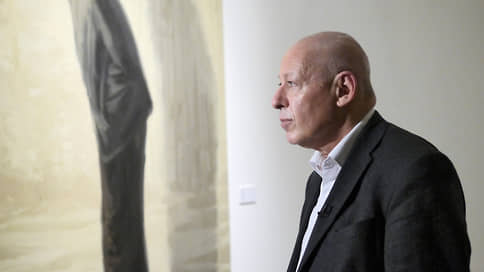Joseph Backstein died
[ad_1]

On January 12, in London, at the age of 79, Joseph Backstein, an art historian, art critic, curator and cultural critic, passed away. He was and will remain one of the key figures of Soviet and then Russian contemporary art.
Joseph Backstein died in the hospital, as his relatives reported, easily and without suffering. The serious illness that plagued him in recent years exhausted his body, but did not destroy his mind and love of life. In his homeland, he is remembered not only as an important curator, one of the founders of the Moscow Biennale of Contemporary Art, but also as a charming young man, an indispensable member of the gang of Moscow conceptualists, a friend of Ilya Kabakov and Boris Groys, who influenced several generations of artists with his example.
His education seemed very distant from this. In 1968, Joseph Backstein graduated from the Moscow Institute of Electronic Engineering, worked as an electronics engineer and even as a senior researcher in the experimental department of the B. S. Mezentsev Institute of Architecture. The institute designed “spectacular buildings and sports facilities,” which gave rise to a meme about the “Institute of Church Buildings and Synagogue Structures” among the group of young designers who were sitting at the Donskoy Monastery at that time.
In 1985, after graduating from graduate school at the Institute of Sociology of the Russian Academy of Sciences, Joseph Backstein became a candidate of philosophical sciences, but had no intention of limiting himself to the role of a scientist. He had an outstanding gift as an organizer, an art curator, back in the days when we had not heard of such a profession, or rather, of such a vocation.
Thanks to structural thinking and a masterly ability to change strategy, Backstein was able to direct and present to the audience a very complex layer of culture, requiring an informal approach, high education and broad-mindedness.
Since the late 1980s, Joseph Backstein began organizing and curating exhibitions of young independent art in Moscow. In particular, he was the executive director and curator of the legendary Club of Avant-Garde Artists (KLAVA), famous for its exhibitions and events held in the most unusual places. Among the club’s projects are the exhibition “Bath”, deployed in the men’s section of the Sandunovsky baths (1988), and an exhibition in Butyrskaya prison (1992), both curated by Backstein.
His brainchild was the Moscow Biennale, which first took place in early 2005.
Backstein assumed the responsibilities of curator-coordinator (2005, 2007) and commissioner (2007–2016). In this post, until he was forced to part with it, he discovered Russian contemporary art, and showed Russia an example of how modern and relevant art should be exhibited. This period of artistic openness to the world is remembered largely due to his efforts and the brilliant team of international curators he assembled.
He headed the Institute of Contemporary Art in Moscow, located in the legendary studio of Ilya Kabakov under the roof of the Rossiya house on Sretensky Boulevard. Not long ago, this institute began to bear his name, which Joseph Backstein, of course, deserves. It is not for nothing that in the published Dictionary of Terms of the Moscow Conceptual School it has long been transformed into a special term given by the philosopher Mikhail Ryklin: “The Backstein function is a universal operator of relevance in the circle of Moscow conceptualism…”
[ad_2]
Source link






